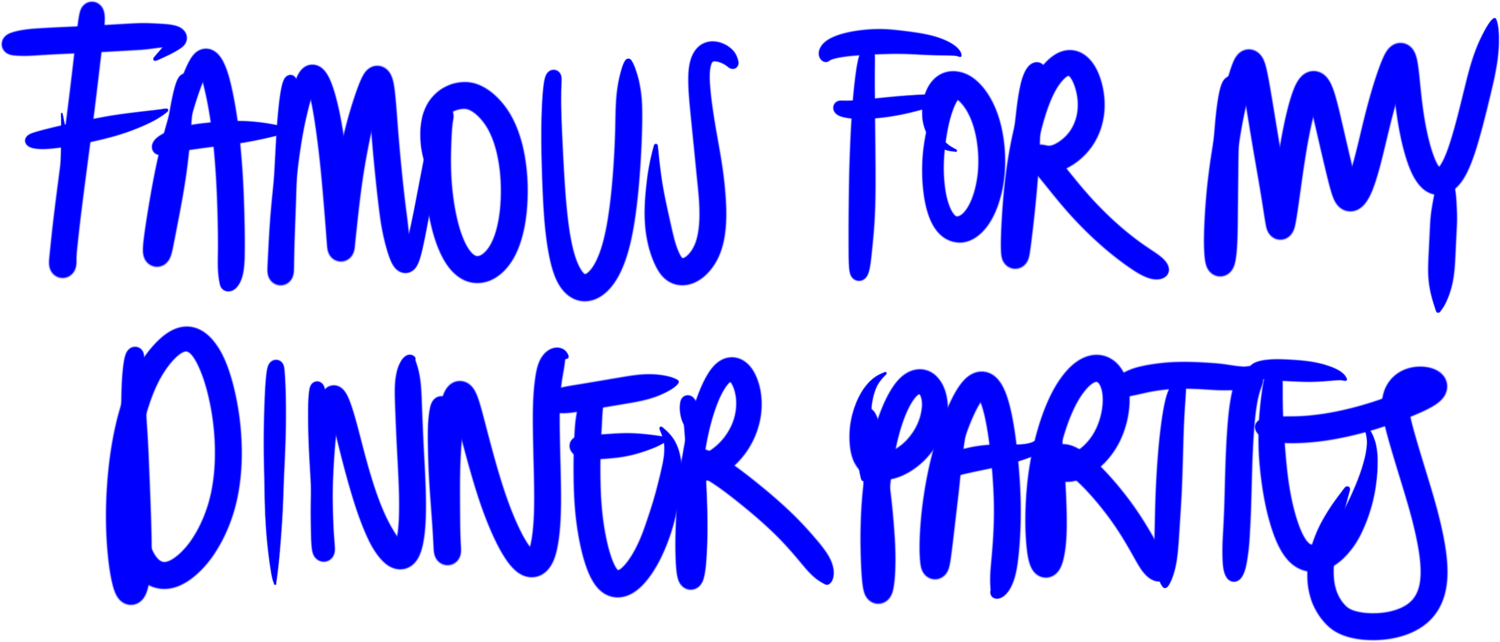PAINTING WORDS AND FOOD: FOOD AS CONCEPTUAL ART
A different kind of answer to the question of whether food, in all its complexities and associations, can and should be considered art can be found in Tom Wolfe’s 1975 diss book The Painted Word. In the text, Wolfe describes in his usual rather polemic poppy style how visual art in the twentieth century became an increasingly non-visual medium, which asked the public to no longer see what happened on the canvas, but instead to use it as a reminder of whatever ideas art theory had instilled in them. In Wolfe’s view, the art itself became a mere illustration of the beautiful, wordy theories of the art critic, who first did away with realism, then with “representational objects. Then we got rid of the third dimension altogether and got really flat (Abstract Expressionism). Then we got rid of airiness, brushstrokes, most of the paint, and the last viruses of drawing and complicated designs”. This evolution concluded in conceptual art, which — as in the example that is about to follow — could be a written account, a documentation, of what could have been a work of art: now purely literary, Wolfe concludes, the visuals could no longer distract from the purity of the work’s theory.
To bring it back to our own thoughts on food and art, the following account describes — although most likely in more detail — an aspect of food that plays a role in all our lives, which is its power to spark our imagination, even, or especially, in absence of the real deal. Do we all create art just by thinking about food? What about all the associations we have with food: Does art imitate life or the other way around? Are recipe books really just works of conceptual art? Read Wolfe’s snarky description of the — fictional? — artwork Beautiful Toast Dream and come to your own conclusions.
“[O]ne of the great outposts of invisible Conceptual Art was the Richmond Art Center in Richmond, California, when Tom Marioni was its director. It was there that I came upon the fabulous Beautiful Toast Dream by a woman whose name I can’t remember. The documentation, which was typed, described how she woke up in the dark at around four in the morning and had a sudden craving for a piece of toast. The craving was so strong, in fact, that she could see it, a crust of Wonder Bread done light brown, and she could already visualize herself taking the crust out of the toaster and spreading Nucoa margarine on it with a serrated knife with a wooden handle, one of those slender numbers with little teeth on the blade that are good for cutting tomatoes or grapefruit, and she can see herself putting the Nucoa on the toast and then sprinkling some white sugar, the usual kind, on the top of that and then shaking some cinnamon on it and then spreading it all on with the serrated knife until the heat of the toast begins to melt the margarine and the teeth of the knife begin to dig little furrows in the bread and the molten margarine begins to build up ahead of each tooth and then runs off between the teeth and into the furrows — but not by itself! — no, the margarine and little ripped papillae of bread run together carrying with them on the surface of the tide granules of sugar that absorb the molten margarine and turn yellow and disappear in this viscous flood of the heat, steel, and fragmented bread papillae while the cinnamon maintains its spreckled identity except when bunching up on the oleaginous surface of the flood like a stain and the crest keeps building but becomes neither fluid nor solid but more of a blob existing only as a kinetic wobble swelling into one final macerated mulled mass reflected in the stainless steel face of the blade as a tawny cresting wave bound by an unbearable surface tension until — all at once! — it is ripped, raked ruptured by the blade and suddenly leaks as if through deflation between the teeth and into the lengthening furrows behind the blade sinking lamely into a harrowed and utterly swamped tan bread delta and she knows it is time to bite off a corner of the crust with yellow Nucoa-soaked sugar grains scraping the ridges of her teeth and caking in the corners of her mouth — but there were no crusts to be found — and she could have no toast — and she had to have a swig of Diet-Rite Cola instead — and, well, I mean I can only hint at the tension, the velocity, the suspense, the meth-like electron-microscopic eye for detail and le mot juste that this woman’s documentation had — it went on and on; a certain Frenchman would have given up the silence of his cork-lined studio to have had one-tenth of this woman’s perception of the minutiae of existence or, in this case, nonexistence, one-twentieth of her patience, one-hundredth of her perseverance to stay with the description until the job is truly done — in short, I was in the presence of … superb post-Proustian literature!”
Read more about the question of food and art: DINNER AT THE MUSEUM: CLIMBING THE PYRAMID OF NEEDS
Text: Yannic Moeken
Source:
Tom Wolfe: The Painted Word. London, 1975.







